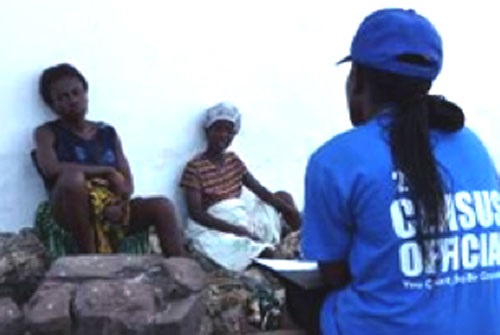The 2021 Population and Housing Census (PHC) report on the Residential Proximity to Essential Services facilities reveals that 73 per cent of residential clusters in rural areas nationwide do not have access to basic education.
Deputy Government Statistician, Fautina Frempong Aiguah, who announced this on Tuesday during a presentation of the preliminary findings of the report, said 30 percent of residential clusters in the rural areas and 19 per cent in the urban areas did not have any facility providing education services.
The report also revealed that 51 per cent of residential structures across the country were outside the recommended distance of one kilometre radius from pre-primary school.
Savannah Region has the largest percent of residential structures living farthest from education, while Greater Accra Region has the lowest percent of residential structures living farthest from education.
On health, the Deputy Government Statistician, said the report showed that 73 percent of rural residential clusters nationwide and 24 per cent of urban areas did not have a facility providing health services.
She said the report revealed that 93 per cent of rural residential clusters nationwide and 38 per cent of urban areas did not have a facility providing financial services, stressing substantial disparities in the availability of essential services between urban and rural areas.
The report revealed that 57 per cent of residential structures were located more than five kimometres from a bank compared with 66 per cent located more than five kilometres from microfinance and 77 per cent located more than five kilometres from a savings or credit union.
Mrs Ainguah said the Universal Declaration of Human Rights considered education and health as basic human rights and that access to financial services, though not a human right had been identified by the World Bank as a pathway to poverty reduction.
She said proximity to schools was linked to higher attendance and retention, especially for girls, and stated that distance to health facilities was negatively correlated with health outcomes including immunisation, birth registration, delay in seeking care and antenatal care coverage.
Distance to financial institutions, she said, was one of the key factors for not owning a bank account, a barrier to accessing formal financial services.
The Deputy Government Statistician said the country’s financial inclusion and development strategy for 2018-2023 included increasing proximity of financial access points such as banks and ATMs as a means to reducing impediments to financial inclusion.
The report, she stated, would aid with the implementation and tracking of the Sustainable Development Goal 10 to reduce inequality within and among countries.
She said essential services included in the report were in line with Sustainable Development Goals Three, Four and Eight.
The 2021 PHC is the country’s first fully digital census, which employed technology in all aspects of its implementation.
It leveraged on technology to improve operational efficiency, enhance the quality of data collected and made it possible to release results in a timely manner.
The census instituted several data quality monitoring mechanisms and used technology to implement interventions towards ensuring complete and accurate coverage.
GNA


